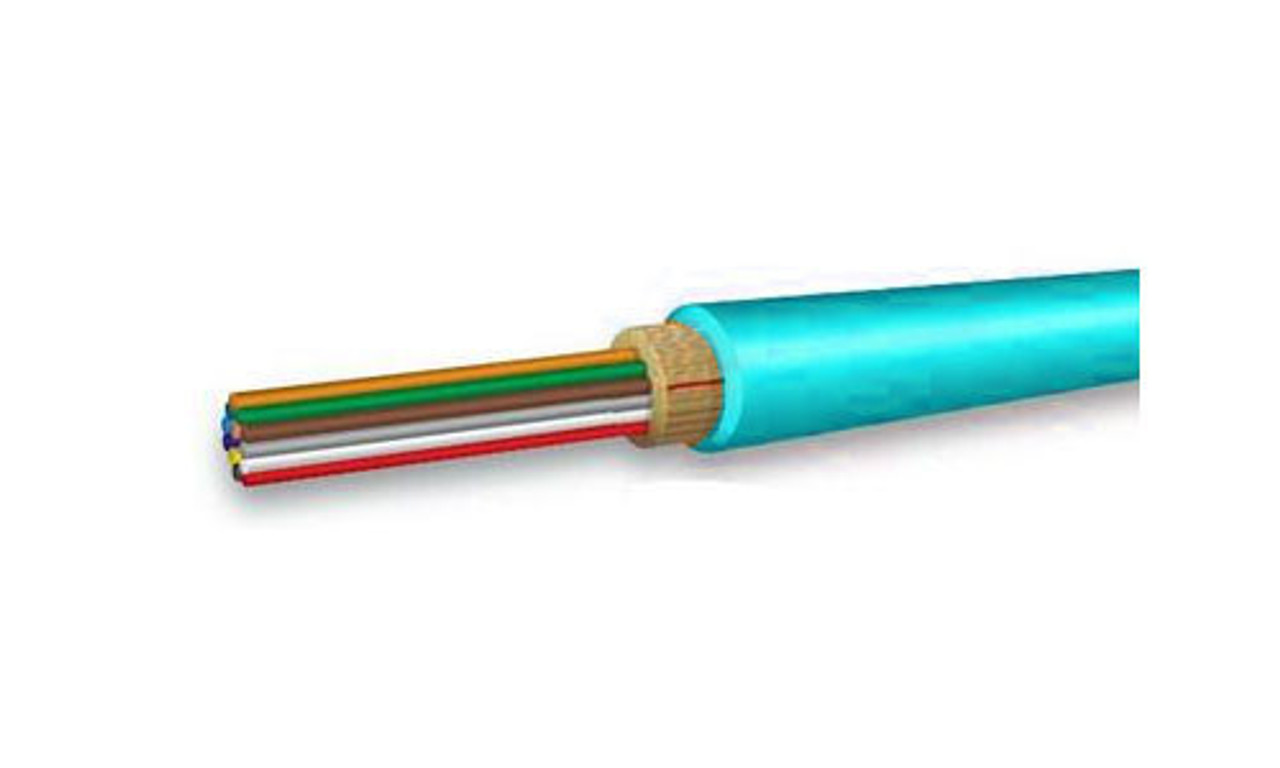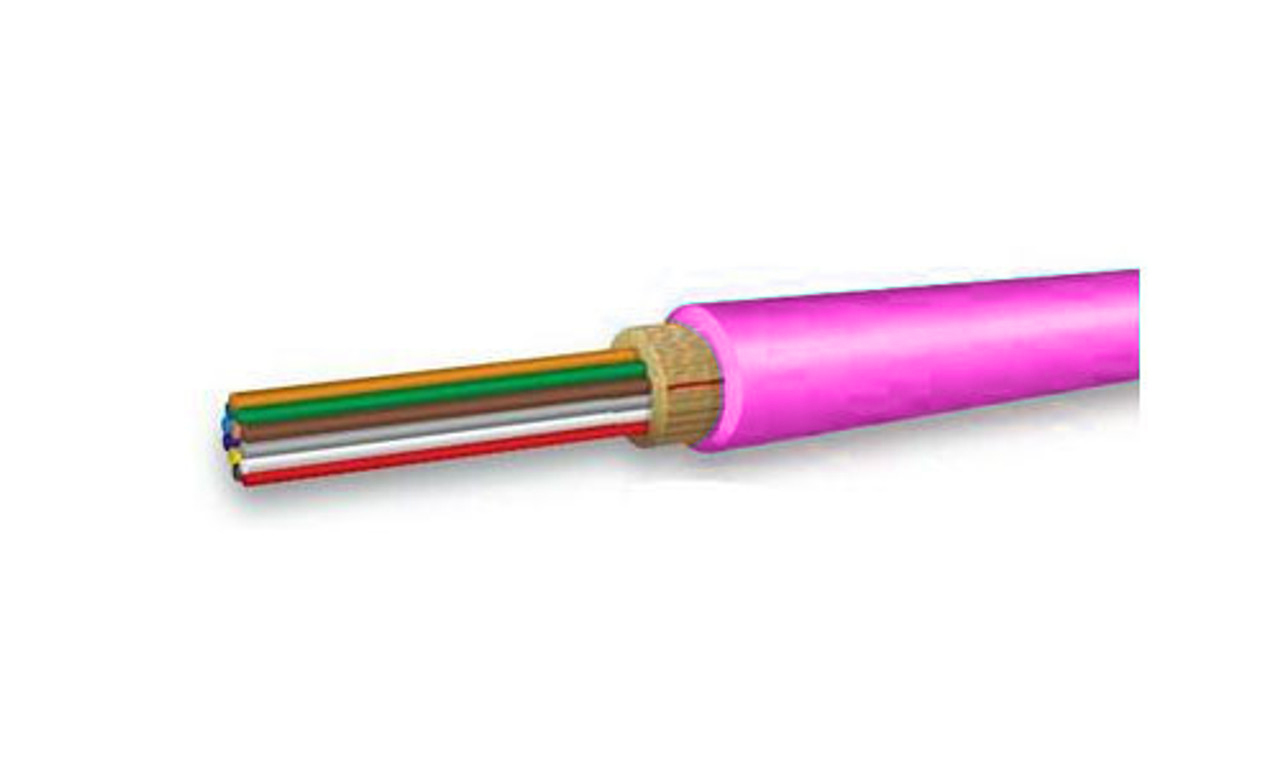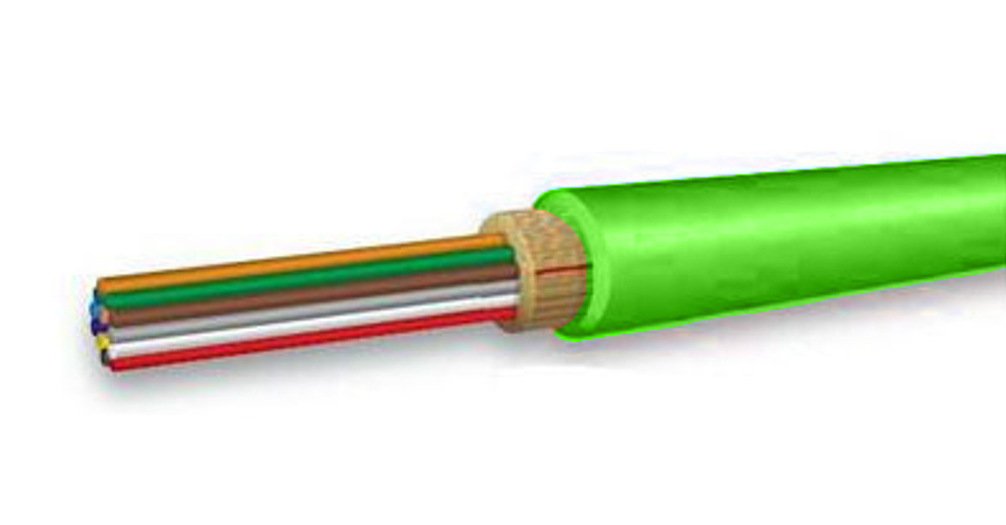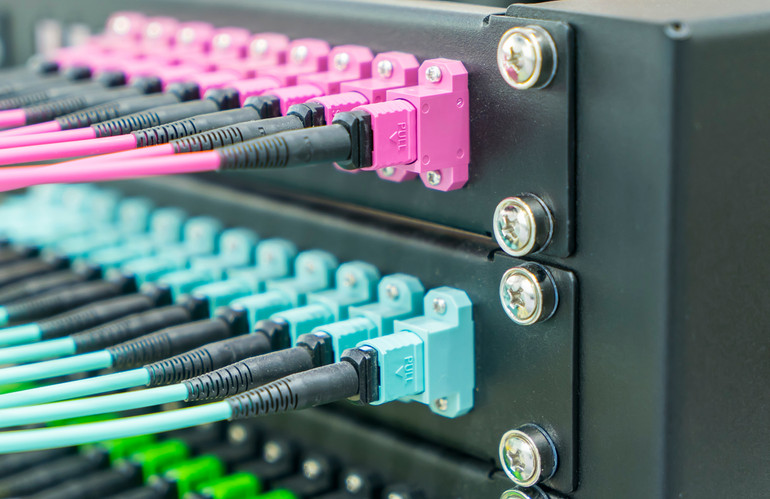
Over the past four decades, fiber optic cabling has advanced considerably to keep up with increasing bandwidth and performance demands. Specifically, multimode fiber cables deployed throughout data centers, backbone LAN infrastructure, and for fiber-to-the-desk applications have evolved significantly since they were first introduced in the 1970s, advancing from OM1 to OM2, OM3, OM4 and now OM5. Let’s look at the major milestones and how each of these multimode fiber cabling types differ in construction, performance, and bandwidth capability.
OM1 Multimode

OM1 was the first type of multimode fiber cabling deployed in the 1980s and 1990s. Now considered legacy technology and no longer recommended in TIA 568 and ISO/IEC 11801 industry standards, OM1 has a larger core diameter of 62.5 microns (μm). The larger core size supported early transceiver LED light sources operating at the 850 nanometer (nm) wavelength. Because LED light sources overfill the fiber and excite more modes (i.e., paths of light), OM1 multimode bandwidth is designated as overfilled launch (OFL) bandwidth, expressed in MHz-km since it’s a product of bandwidth and distance.
OM1 can only support 1 Gigabit Ethernet to about 300 meters and 10 Gig to about 30 meters. While considered obsolete, the resiliency of fiber means that there is still an installed base of OM1 in many data centers and enterprise LANs functioning quite well for 1 Gig or short lengths of 10 Gig. The industry standard jacket color for OM1 is orange, so it’s quite apparent when you see it.
OM2 Multimode
There’s not much to say about OM2 multimode fiber since it never achieved adoption and was quickly replaced by OM3. It’s considered obsolete and not permitted by industry standards. One would be hard-pressed to find it in any LAN environment or available for purchase.
What is most interesting about OM2 is that it was the first multimode fiber to have a smaller 50μm core for use with laser light sources rather than LEDs. However, OM2 was never fully “laser optimized” for use with popular low-cost vertical-cavity surface-emitting laser (VCSEL) light sources, which came on the scene in the early 90s and are still used today.
OM3 Multimode

Introduced in the early 2000s, OM3 was the first laser-optimized 50μm multimode fiber for use with VCSELs. Because laser light sources don’t overfill the fiber the way LEDs do, effective modal bandwidth (EMB) was introduced for determining the bandwidth.
OM3 offers a significant improvement in bandwidth capability over OM1. It supports 1 Gig speeds to about 1000 meters and 10 Gigabit speeds to about 300 meters. Industry standards no longer recommend OM3, but it is still recognized. It even supports 40 and 100 Gig applications to 100 meters and is included in high-speed 200, 400, and 800 Gig applications but at shorter distances than OM4. For 400GBASE-SR4 parallel optics applications using 8 fibers (4 transmitting and 4 receiving at 100 gigabits per second), OM3 can support 70 meters, which is still sufficient for many data center links. OM3 is also slated to support future 800 Gig SR8 applications to 70 meters. The industry standard jacket color for OM3 is aqua.
OM4 Multimode

In multimode fiber where light signals travel in multiple modes, differential mode delay (DMD) is the primary factor impacting performance. DMD is caused by some modes of light traveling faster than others and not arriving simultaneously at the receiver. OM4 laser-optimized 50μm multimode fiber was introduced in 2010 to minimize the effects of DMD, thereby offering higher bandwidth. Fiber manufacturers minimized DMD by grading the glass's refractive index (i.e., how light travels through material) from the center core to the outer cladding. This speeds up slower traveling modes closer to the cladding via a curved path and slows down faster traveling modes closer to the core, enabling all light signals to arrive simultaneously as shown below.

With its higher bandwidth capability, OM4 is the standard recommended multimode fiber for most applications today. It can support 1 Gig to well over 1000 meters, 10 Gig to about 550 meters, and 40 and 100 Gig parallel optics applications to 150 meters. It supports 400 Gig and future 800 Gig applications to 100 meters. The industry standard jacket color for OM4 is aqua or Erika violet (pink). Erika violet was introduced because in mixed OM3/OM4 environments, it can be difficult to distinguish between the two without reading the jacket label. When OM3 and OM4 are combined in a link, that link will only achieve OM3 performance.
OM5 Multimode

OM5 is the latest type of laser-optimized 50μm multimode fiber cable. It offers the same bandwidth and performance as OM4 for 850nm VCSELs. The primary difference is that OM5 also includes specifications for operating at a higher 953nm wavelength. With this additional wavelength operation, OM5 supports short wavelength division multiplexing (SWDM) technology that transmits on multiple wavelengths. Also referred to as wide-band multimode fiber (WBMMF), OM5 increases distances for SWDM applications such as 400GBASE-SR4.2, supporting 150 meters versus 100 meters with OM4 and 70 meters with OM3.
400GBASE-SR4.2 operates at 50 Gbps on two wavelengths over 8 fibers, enabling 4 fibers to each transmit at 100 Gbps and 4 fibers to receive at 100 Gbps. It is currently the only official SWDM application and, therefore the only application where OM5 offers a benefit. Because SWDM is a more expensive technology, and OM5 costs more than OM4, many see little value is deploying OM5 over OM4. Plus, with the ability to now operate at 100 Gbps on one wavelength, 400GBASE-SR4 supports 400 Gig over 8 fibers without the need for SWDM and OM5. However, there could be future SWDM applications that could take advantage of the 953nm wavelength. The industry standard jacket color for OM5 is lime green.
Choosing the Right Multimode
The table below summarizes the difference between OM1, OM2, OM3, OM4, and OM5 multimode fiber cables to help you choose the right type for your application.
| Fiber Type |
Core Size
(μm) |
OFLBandwidth @850nm (MHZ-km) |
EMB Bandwidth @850nm
(MHZ-km) |
EMB Bandwidth @953nm
(MHZ-km) |
Color |
10 Gig Distance
(m) |
40/100 Gig Distance
(m) |
400 Gig Distance
(m) |
|---|---|---|---|---|---|---|---|---|
|
OM1
(Legacy) |
62.5 | 200 | NA | NA | Orange | 30 | NA | NA |
|
OM2
(Obsolete) |
50 | 500 | NA | NA | Orange or Gray | NA | NA | NA |
|
OM3
(Laser-optimized) |
50 | 1500 | 2000 | NA | Aqua | 300 | 100 | 70 |
|
OM4
(Laser-optimized) |
50 | 3500 | 4700 | NA | Aqua or Erika Violet | 550 | 150 | 100 |
|
OM5
(Laser-optimized) |
50 | 3500 | 4700 | 2470 | Lime Green | 550 | 150 |
100
150 (SR4.2) |
Ensuring the right multimode fiber type for your data center or LAN application and reach is essential. The good news is that Cables Plus USA offers a one-stop shop for multimode fiber cables to suit your needs. If you're unsure what type of cable you need, our experts are always here to help you choose the best option. Contact us, and we will be happy to assist you!

